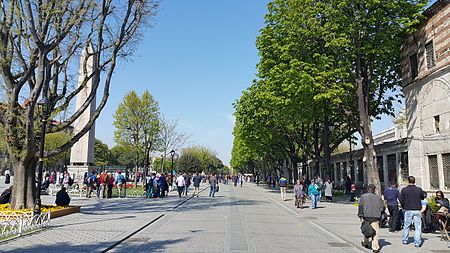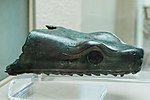Sultanahmet Square

Sultanahmet Square (Turkish: Sultanahmet Meydanı), or the Hippodrome of Constantinople (Greek: Ἱππόδρομος τῆς Κωνσταντινουπόλεως, romanized: Hippódromos tēs Kōnstantinoupóleōs; Latin: Circus Maximus Constantinopolitanus; Turkish: Hipodrom) is a square in Istanbul, Turkey. Previously, it was a circus that was the sporting and social centre of Constantinople, capital of the Byzantine Empire. The word hippodrome comes from the Greek hippos (ἵππος), horse, and dromos (δρόμος), path or way. For this reason, it is sometimes also called Atmeydanı ("Horse Square") in Turkish. Horse racing and chariot racing were popular pastimes in the ancient world and hippodromes were common features of Greek cities in the Hellenistic, Roman and Byzantine eras.
Excerpt from the Wikipedia article Sultanahmet Square (License: CC BY-SA 3.0, Authors, Images).Sultanahmet Square
Sultan Ahmet Square, Istanbul
Geographical coordinates (GPS) Address Nearby Places Show on map
Geographical coordinates (GPS)
| Latitude | Longitude |
|---|---|
| N 41.006388888889 ° | E 28.975833333333 ° |
Address
Theodosius Dikilitaşı
Sultan Ahmet Square
34122 Istanbul
Türkiye
Open on Google Maps









